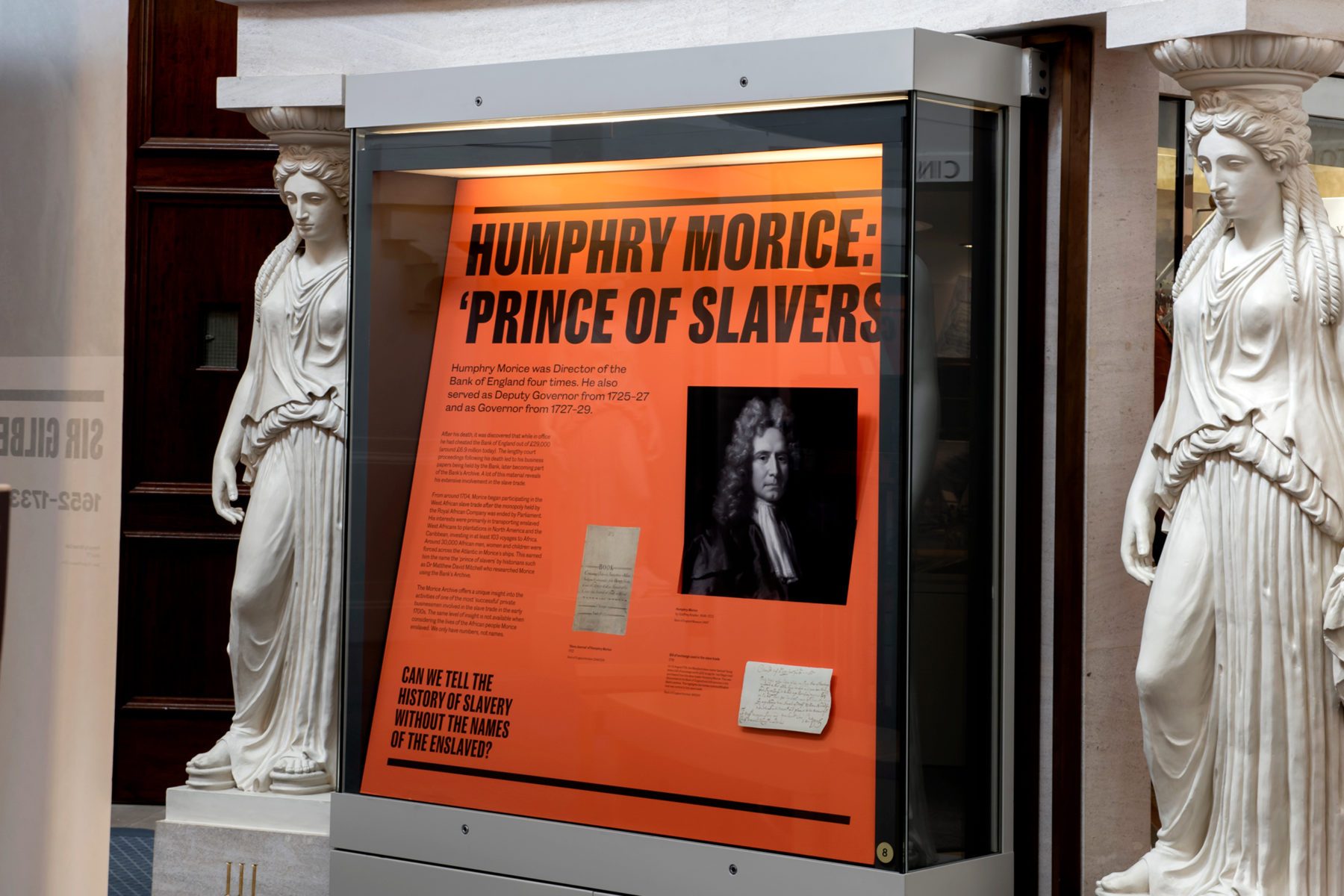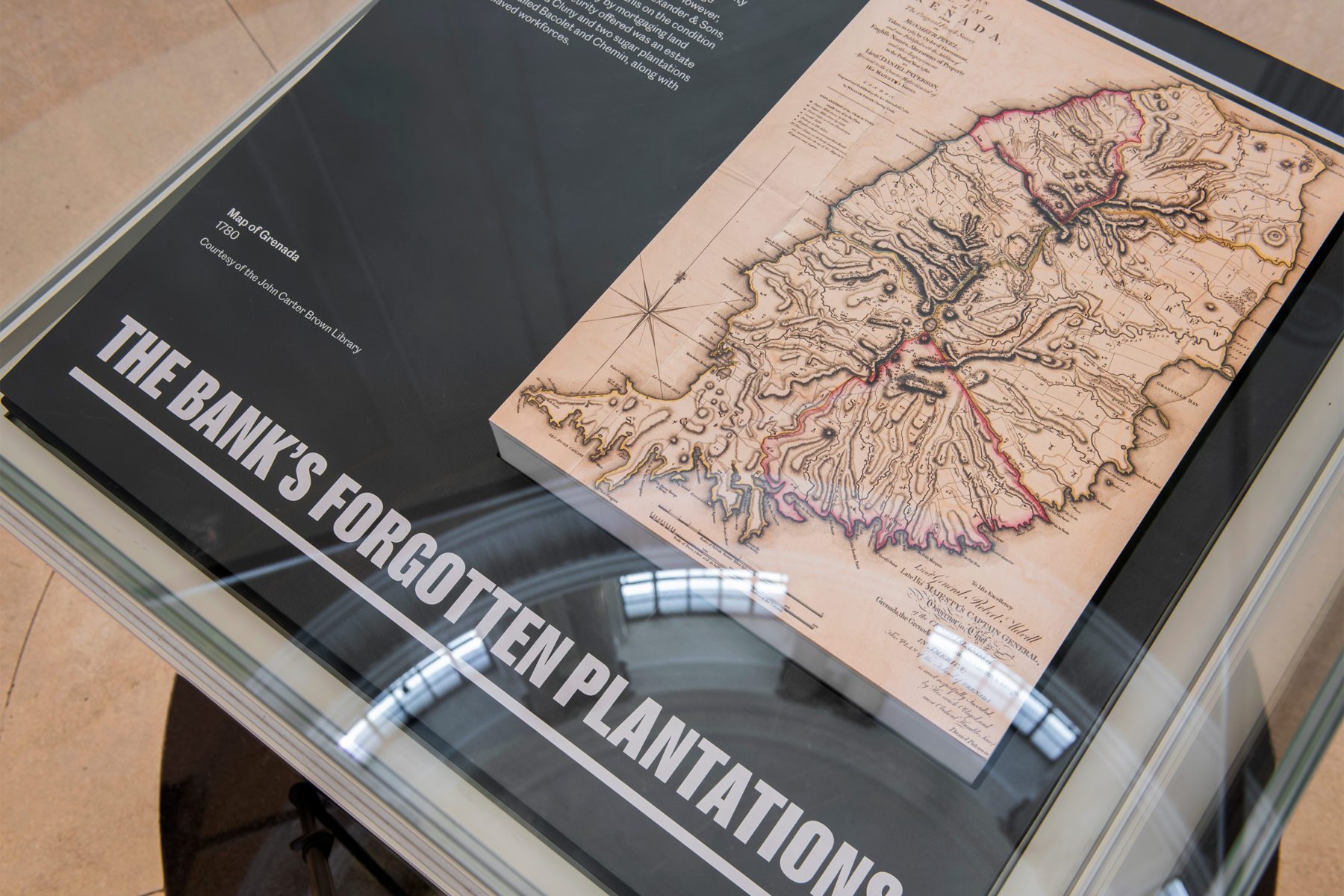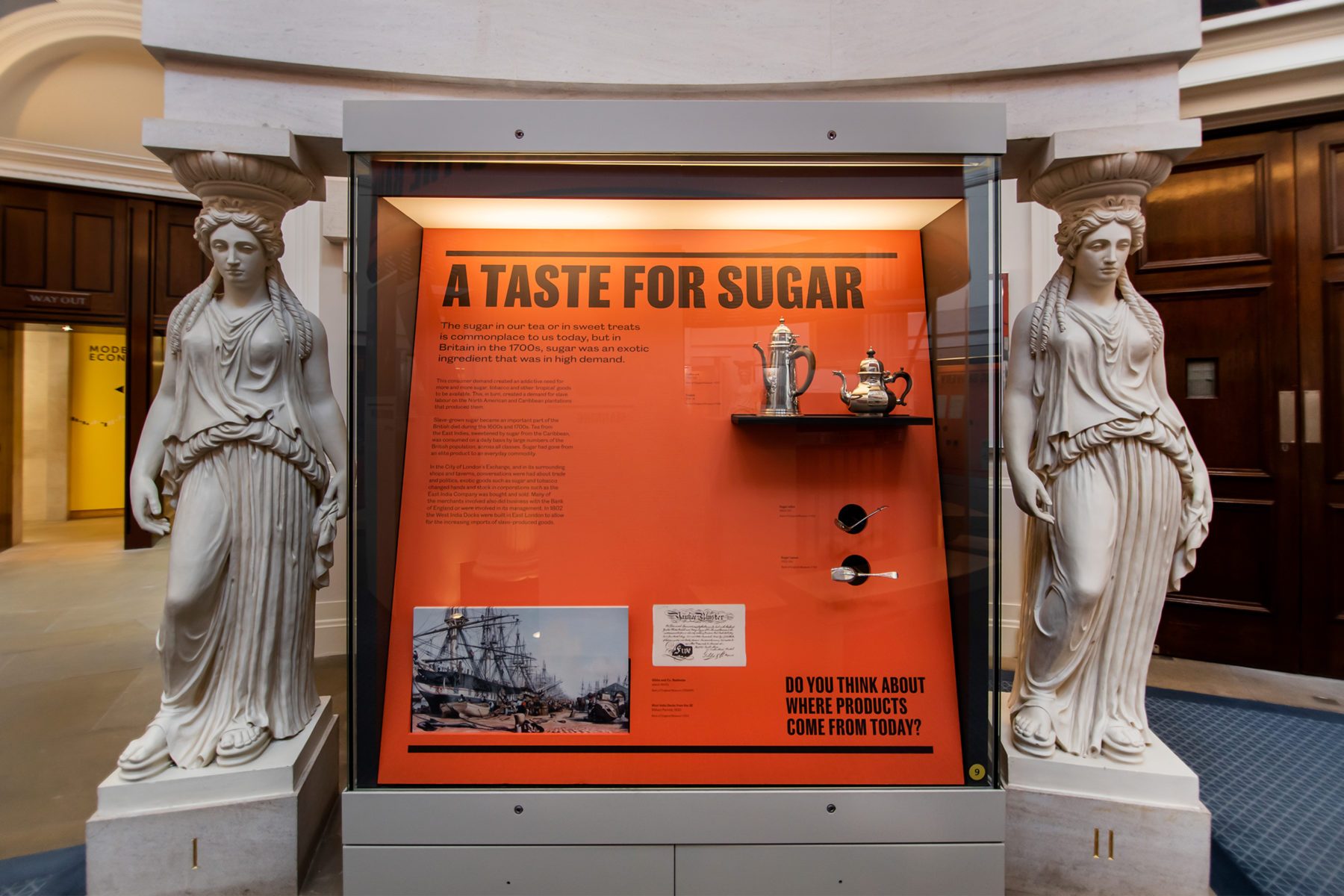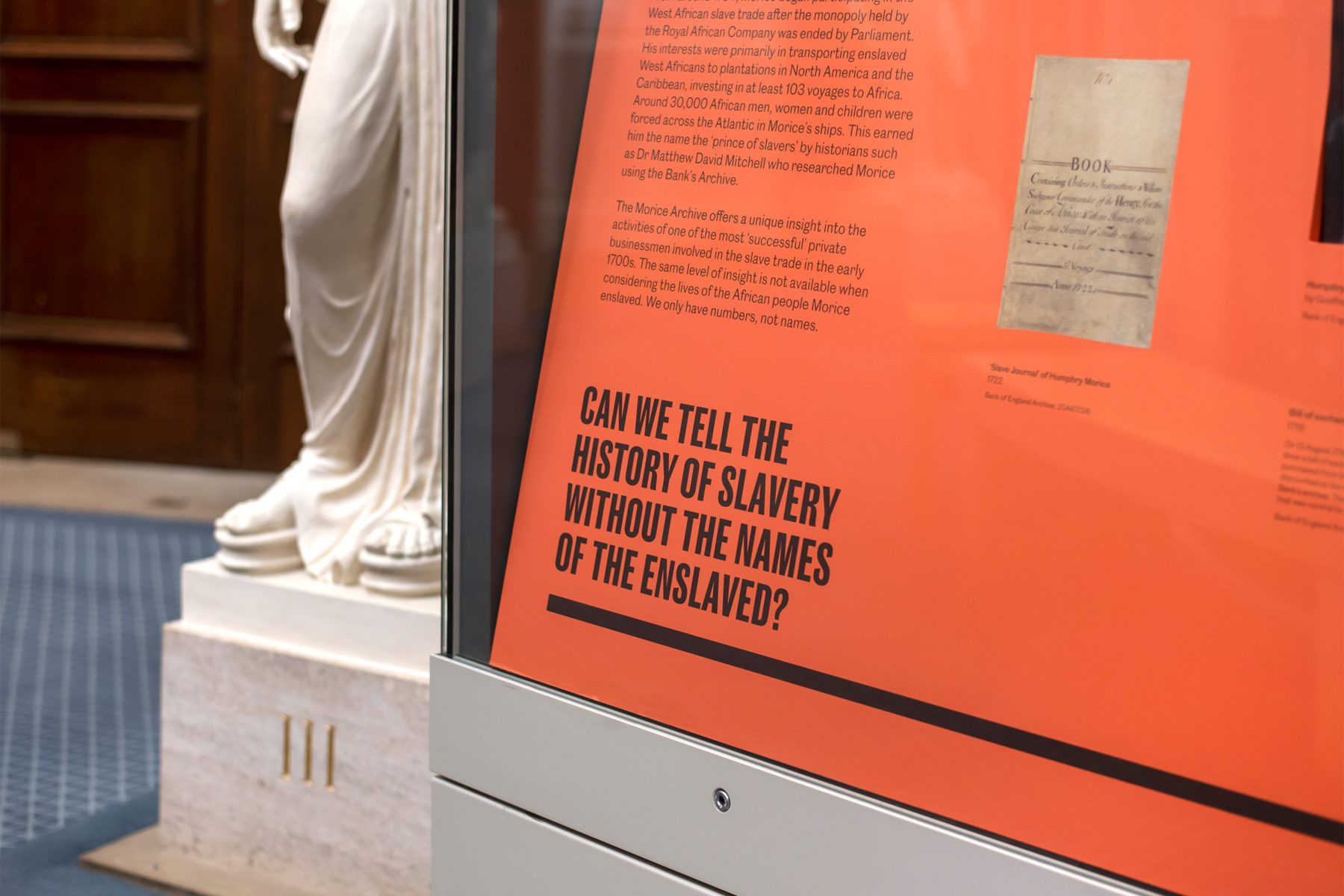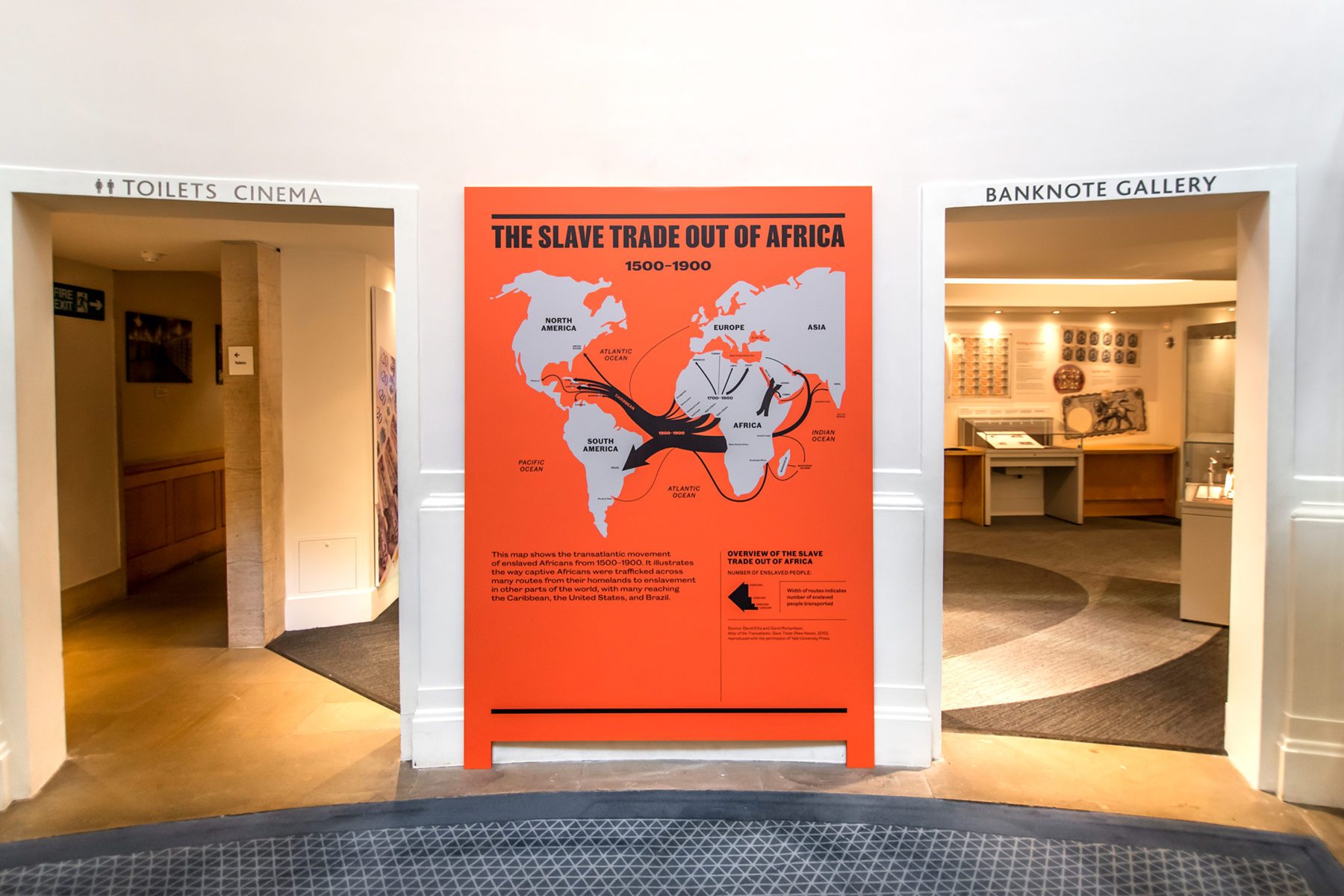The exhibition describes the role of former Governors and Directors who featured in some of the portraits and busts that were removed from display in a private area of the Bank. The exhibition also examines other types of involvement the Bank had with the transatlantic slave trade and is told through a select number of objects in the Museum’s collection combined with graphics, including reproductions of archival material.


